Mingwei Wang
Zero-Shot Self-Consistency Learning for Seismic Irregular Spatial Sampling Reconstruction
Nov 01, 2024
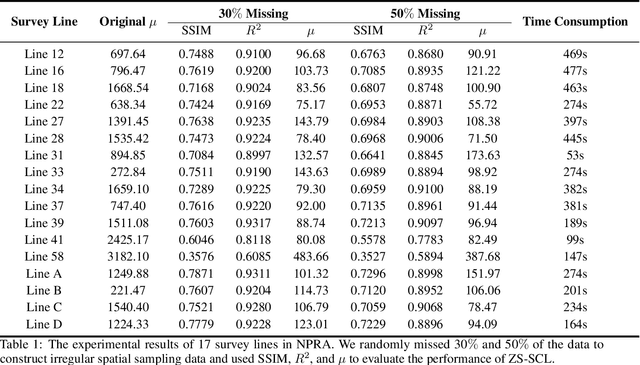

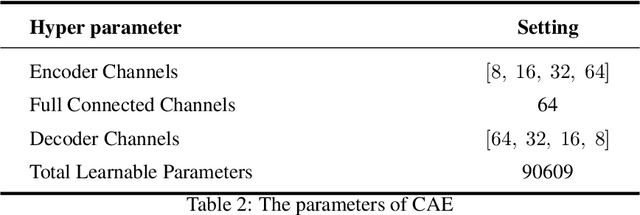
Abstract:Seismic exploration is currently the most important method for understanding subsurface structures. However, due to surface conditions, seismic receivers may not be uniformly distributed along the measurement line, making the entire exploration work difficult to carry out. Previous deep learning methods for reconstructing seismic data often relied on additional datasets for training. While some existing methods do not require extra data, they lack constraints on the reconstruction data, leading to unstable reconstruction performance. In this paper, we proposed a zero-shot self-consistency learning strategy and employed an extremely lightweight network for seismic data reconstruction. Our method does not require additional datasets and utilizes the correlations among different parts of the data to design a self-consistency learning loss function, driving a network with only 90,609 learnable parameters. We applied this method to experiments on the USGS National Petroleum Reserve-Alaska public dataset and the results indicate that our proposed approach achieved good reconstruction results. Additionally, our method also demonstrates a certain degree of noise suppression, which is highly beneficial for large and complex seismic exploration tasks.
Machine Learning-Based Research on the Adaptability of Adolescents to Online Education
Aug 29, 2024Abstract:With the rapid advancement of internet technology, the adaptability of adolescents to online learning has emerged as a focal point of interest within the educational sphere. However, the academic community's efforts to develop predictive models for adolescent online learning adaptability require further refinement and expansion. Utilizing data from the "Chinese Adolescent Online Education Survey" spanning the years 2014 to 2016, this study implements five machine learning algorithms - logistic regression, K-nearest neighbors, random forest, XGBoost, and CatBoost - to analyze the factors influencing adolescent online learning adaptability and to determine the model best suited for prediction. The research reveals that the duration of courses, the financial status of the family, and age are the primary factors affecting students' adaptability in online learning environments. Additionally, age significantly impacts students' adaptive capacities. Among the predictive models, the random forest, XGBoost, and CatBoost algorithms demonstrate superior forecasting capabilities, with the random forest model being particularly adept at capturing the characteristics of students' adaptability.
Distance Guided Generative Adversarial Network for Explainable Binary Classifications
Dec 29, 2023Abstract:Despite the potential benefits of data augmentation for mitigating the data insufficiency, traditional augmentation methods primarily rely on the prior intra-domain knowledge. On the other hand, advanced generative adversarial networks (GANs) generate inter-domain samples with limited variety. These previous methods make limited contributions to describing the decision boundaries for binary classification. In this paper, we propose a distance guided GAN (DisGAN) which controls the variation degrees of generated samples in the hyperplane space. Specifically, we instantiate the idea of DisGAN by combining two ways. The first way is vertical distance GAN (VerDisGAN) where the inter-domain generation is conditioned on the vertical distances. The second way is horizontal distance GAN (HorDisGAN) where the intra-domain generation is conditioned on the horizontal distances. Furthermore, VerDisGAN can produce the class-specific regions by mapping the source images to the hyperplane. Experimental results show that DisGAN consistently outperforms the GAN-based augmentation methods with explainable binary classification. The proposed method can apply to different classification architectures and has potential to extend to multi-class classification.
Channel Estimation for Reconfigurable Intelligent Surface-Assisted Cell-Free Communications
Jul 28, 2022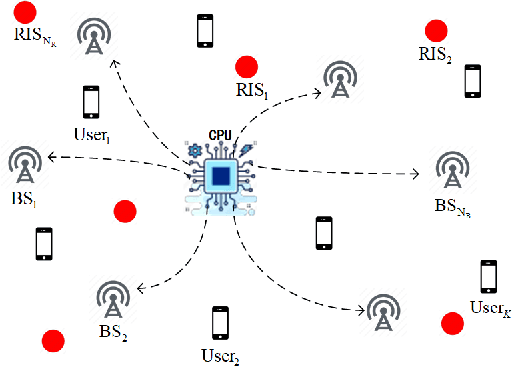
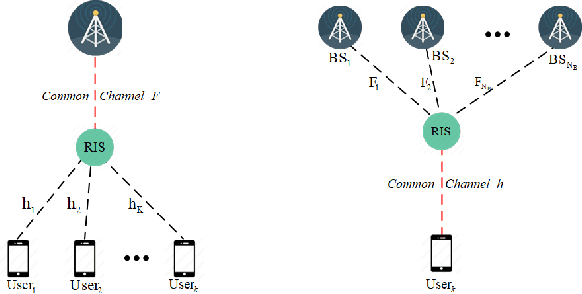

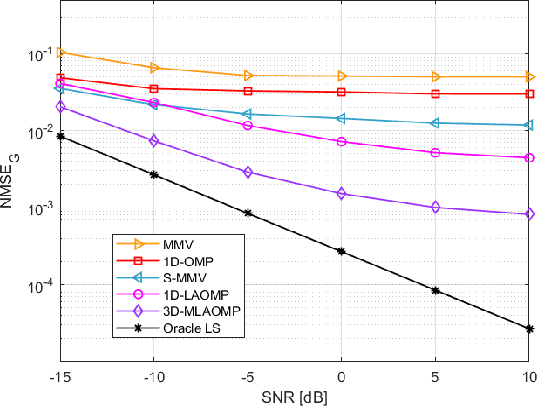
Abstract:Recent research has focused on reconfigurable intelligent surface (RIS)-assisted cell-free systems with the goal of enhancing coverage and lowering the cost of cell-free networks. However, current research makes the assumption that the perfect channel state information is known. Channel acquisition is, certainly, a difficulty in this case. This work is aimed at investigating RIS-assisted cell-free channel estimation. Toward this end, two unique characteristics are pointed out: 1) For all users, a common channel exists between the base station (BS) and the RIS; and 2) For all BSs, a common channel exists between the RIS and the user. Based on these two characteristics, cascaded and two-timescale channel estimation concerns are studied. Subsequently, two solutions for tackling with the two issues are presented respectively: a three-dimensional multiple measurement vector (3D-MMV)-based compressive sensing technique and a multi-BS cooperative pilot-reduced methodology. Finally, simulations illustrate the effectiveness of the schemes we have presented.
 Add to Chrome
Add to Chrome Add to Firefox
Add to Firefox Add to Edge
Add to Edge